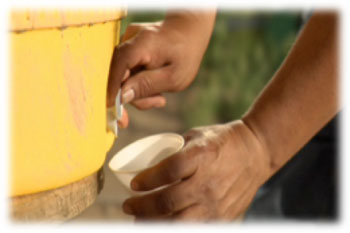Hot and Hazardous
Excessive exposure to a hot work environment can bring about a variety of heat-induced disorders ranging in severity from an irritating heat rash (prickly heat) to heat stroke, a life threatening condition that can quickly result in brain damage or death. Heat stress contributes to the loss of productivity and workplace injuries, but it can be controlled. Simple precautionary measures and the exertion of leadership will protect workers from sustaining heat stress injuries. Don’t surrender to Mother Nature! Heat Stress is a signal that says the body is having difficulty maintaining its narrow temperature range, all in an attempt to transfer more heat to the outside air and cool the skin by evaporation of sweat. If your body can’t keep up, then you will suffer effects ranging from heat cramps to heat exhaustion, and finally to heat stroke. In dry climates you might not feel wet or sticky, but you are still sweating. On a very warm day you can lose as much as two liters of fluid.

Preventive Measures
Help prevent the ill effects of heat stress by:
-
Drinking water frequently and moderately (every 15-20 minutes, at least 8 ounces) and resting frequently;
-
Doing more strenuous jobs during the cooler morning hours;
-
Remembering that it takes about 1-2 weeks for the body to adjust to the heat; this adaptation to heat is quickly lost – so your body will need time to adjust after a vacation too;
-
Avoiding alcohol consumption; Many cases of heat stroke have occurred the day after a “night on the town;” and
- Wearing light colored cotton clothes and keeping your shirt on—desert nomads don’t wear all those clothes for no reason.
Try to practice prevention -‐ it’s the name of the game -‐ and it will keep you from becoming a victim of a heat related illness.
Download flyer: STOTW_39_Hot and Hazardous.pdf (114.75 kb)

